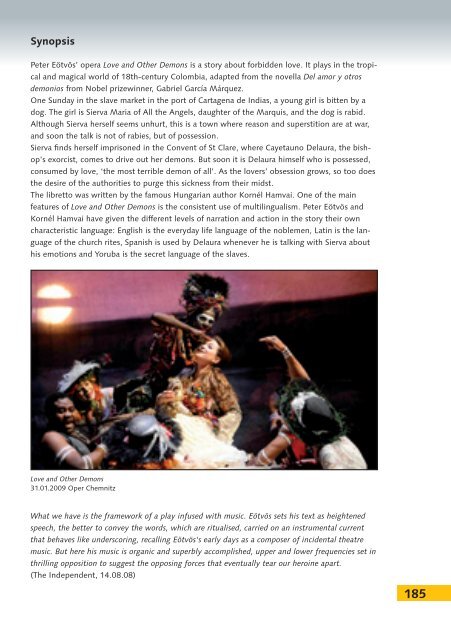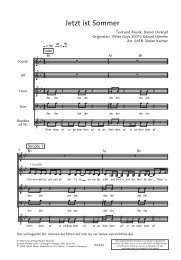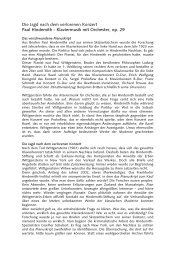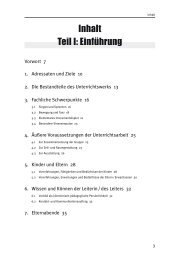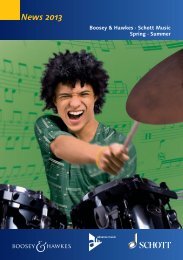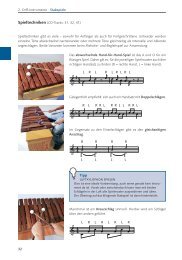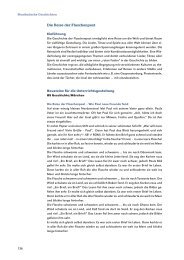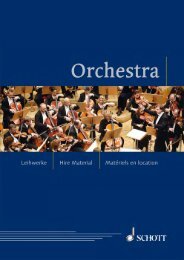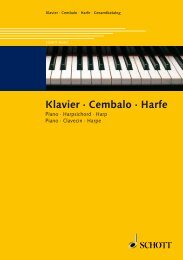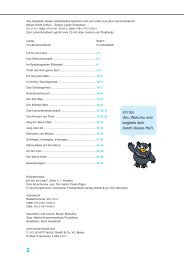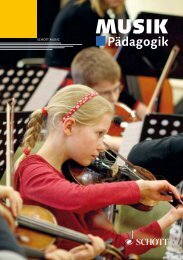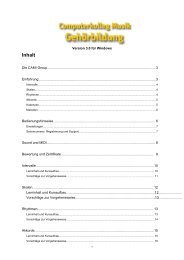Music Theatre since 1990 - Schott Music
Music Theatre since 1990 - Schott Music
Music Theatre since 1990 - Schott Music
You also want an ePaper? Increase the reach of your titles
YUMPU automatically turns print PDFs into web optimized ePapers that Google loves.
Synopsis<br />
Peter Eötvös’ opera Love and Other Demons is a story about forbidden love. It plays in the tropical<br />
and magical world of 18th-century Colombia, adapted from the novella Del amor y otros<br />
demonios from Nobel prizewinner, Gabriel García Márquez.<br />
One Sunday in the slave market in the port of Cartagena de Indias, a young girl is bitten by a<br />
dog. The girl is Sierva Maria of All the Angels, daughter of the Marquis, and the dog is rabid.<br />
Although Sierva herself seems unhurt, this is a town where reason and superstition are at war,<br />
and soon the talk is not of rabies, but of possession.<br />
Sierva finds herself imprisoned in the Convent of St Clare, where Cayetauno Delaura, the bishop’s<br />
exorcist, comes to drive out her demons. But soon it is Delaura himself who is possessed,<br />
consumed by love, ‘the most terrible demon of all’. As the lovers’ obsession grows, so too does<br />
the desire of the authorities to purge this sickness from their midst.<br />
The libretto was written by the famous Hungarian author Kornél Hamvai. One of the main<br />
features of Love and Other Demons is the consistent use of multilingualism. Peter Eötvös and<br />
Kornél Hamvai have given the different levels of narration and action in the story their own<br />
characteristic language: English is the everyday life language of the noblemen, Latin is the language<br />
of the church rites, Spanish is used by Delaura whenever he is talking with Sierva about<br />
his emotions and Yoruba is the secret language of the slaves.<br />
Love and Other Demons<br />
31.01.2009 Oper Chemnitz<br />
What we have is the framework of a play infused with music. Eötvös sets his text as heightened<br />
speech, the better to convey the words, which are ritualised, carried on an instrumental current<br />
that behaves like underscoring, recalling Eötvös‘s early days as a composer of incidental theatre<br />
music. But here his music is organic and superbly accomplished, upper and lower frequencies set in<br />
thrilling opposition to suggest the opposing forces that eventually tear our heroine apart.<br />
(The Independent, 14.08.08)<br />
185


